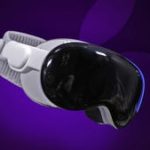Having non-alcoholic beer on-tap has its advantages, or so Heineken says. The number one advantage is it allows consumers to have a more authentic experience when having a pint.
With the stigma surrounding non-alcoholic drinking still present in some circumstances, it also means that the consumer can blend in more easily, a pint of beer looking more or less the same whether it’s alcoholic or not.
However, there are a number of technical barriers as well, including the fact that beer sold on tap usually relies on the antimicrobial properties of alcohol to keep it safe to drink. Without these, hygiene is more difficult.
One beer brand that is now widespread on tap is Heineken. The brand’s 0.0 beer is available from more than 5,000 locations worldwide, including 3,000 in Ireland and 1,000 in the UK (hoping to reach 2,000 by the end of the year.)
According to chief corporate affairs officer Joanna Price, Heineken is the biggest brand by volume in the 0.0 space.
What are the challenges behind such expansion? And how successful has it been with consumers?
On-trade expansionHaving non-alcoholic beer on draught is “game-changing” for Heineken, explains Price. “There’s nothing like draught beer.”
While Heineken 0.0 had previously been sold in bottled format on-trade, around 85% of service by volume in venues comes from on-draught beer, explains Will Rice, Heineken’s on-trade director. “That’s where you need to be. But that’s not easy.” Ultimately, he adds, “we want to get people into the pub”.
Also read → Non-alcoholic beer: What are the hygiene risks?And indeed, that’s what the brand has been doing. The success of the beer on draught is “surpassing expectations”, explains global innovation director Jules Macken.
The primary challenges in getting the beer on-draught have been technical rather than demand-based, adds Rice, and the company has been working on technical solutions for some time.
However, “whilst we’ve done that, consumer demand has caught up”. As the technology to put it on-draught has come to fruition, in other words, so has the demand for 0.0.
However, challenges remain. It is still much cheaper to put alcoholic beer on tap, for instance.
Developing 0.0 Much like with non-alcoholic spirits, developing non-alcoholic beer relies largely on the same processes as the brewing of alcoholic beer.
“Heineken is a beer where the taste comes from fermentation,” explains global master brewer Willem van Waesberghe. Therefore, you need to ferment before removing the alcohol.
Once it’s in the keg, however, pouring it becomes difficult, adds Rice. You can’t allow it to sit in the line and go through a secondary ferment, he says, as this could lead to to it containing small amounts of alcohol of up to around 1%.
“If this weren’t a true 0.0, we could roll this out much faster, but the fact is, we are a true 0.0, and we want to remain that.”
Despite these processes, non-alcoholic still does not taste exactly the same as alcoholic beer, explains Waesberghe. However, the mind helps us to adapt.
When we drink beer, the mind has a reference for what it expects to taste like and on first taste, non-alcoholic beer is incongruent with this reference. However, frequent consumption of 0.0 means that the mind adapts the reference, getting used to the slightly different taste, he says.





GIPHY App Key not set. Please check settings